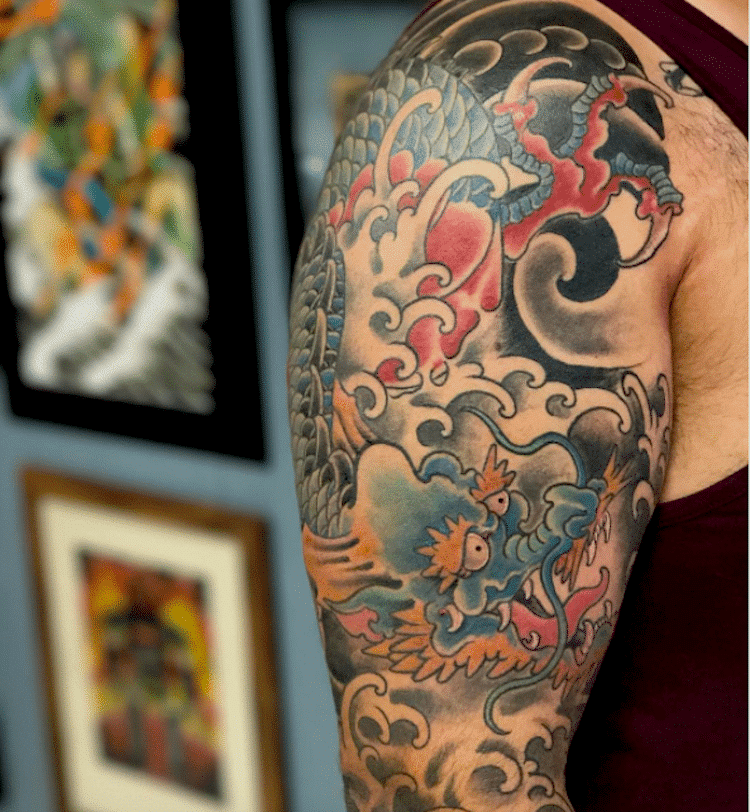Delving into the Timeless Art of Japanese Tattoos
Japanese tattoos, also known as irezumi, are a captivating form of body art that has captivated the world for centuries. With its intricate designs, rich symbolism, and deep cultural roots, irezumi has transcended the boundaries of time and geography, becoming a beloved art form that continues to inspire and amaze.
A Historical Glimpse: From Isolation to Global Influence
The origins of Japanese tattoos can be traced back to ancient Japan, where they were initially used for decorative and ritual purposes. However, during the Edo period (1603-1867), tattoos became associated with criminals and social outcasts, leading to a period of suppression and marginalization.
In 1853, the arrival of American Commodore Matthew Perry and his “Black Ships” marked a turning point in Japan’s isolationist policies. This event ushered in an era of Western influence, including the introduction of Western tattoos to Japanese society.
Ironically, while Japanese tattooing was officially banned for locals in 1968, it simultaneously gained widespread popularity abroad. Ex-sailors like George Burchett, who had encountered irezumi during their travels with the British Navy, brought back tales of its beauty and artistry.
As Japanese tattoos gained international recognition, they began to evolve, incorporating Western influences and adapting to the tastes of a broader audience. Today, irezumi is enjoyed by people from all walks of life, captivating them with its timeless beauty and profound cultural significance.
Symbolism and Meaning: A Narrative on the Skin
Japanese tattoos are not merely visual expressions; they are deeply symbolic, often embodying powerful cultural beliefs and narratives. Common motifs in irezumi include:
Dragons: Symbolizing power, strength, and wisdom, dragons are often seen as protectors and guides.
Tigers: Representing courage, ferocity, and leadership, tigers are associated with strength and self-confidence.
Cherry Blossoms: Evoking fleeting beauty and impermanence, cherry blossoms symbolize the ephemeral nature of life and the importance of appreciating the present moment.
Carp (Koi): Symbolizing perseverance, strength, and overcoming obstacles, koi fish are often depicted as swimming upstream against the current.
Buddhist and Shinto Imagery: References to Buddhist and Shinto deities, symbols, and teachings are common in irezumi, reflecting the deep-rooted spirituality of Japanese culture.
The Art of Irezumi: A Masterful Craft
Japanese tattooing is a meticulous and time-consuming process, often requiring multiple sessions to complete a full-body design. Traditional irezumi utilizes a variety of techniques, including tebori, a method that involves hand-poking the skin with a set of needles, and horimono, a more modern approach that employs electric tattoo machines.
The colors used in irezumi are also significant, with each shade carrying its own symbolic meaning. Red represents fire, passion, and courage, while blue symbolizes water, tranquility, and wisdom. Black, the most prevalent color in irezumi, conveys strength, resilience, and the essence of the universe.
The Enduring Appeal of Irezumi
Despite its long history and cultural significance, Japanese tattooing remains a vibrant and evolving art form. Modern tattoo artists continue to draw inspiration from traditional irezumi motifs, while also incorporating contemporary styles and techniques.
The appeal of Japanese tattoos lies in their ability to capture the beauty, spirituality, and cultural richness of Japan. Their intricate designs, rich symbolism, and association with traditional craftsmanship make them a timeless form of artistic expression that continues to captivate and inspire people worldwide.
Conclusion
Japanese tattoos offer a unique glimpse into the soul of Japanese culture, where art, tradition, and spirituality intertwine. With their captivating designs, profound symbolism, and enduring legacy, irezumi stands as a testament to the power of art to transcend time and culture.
